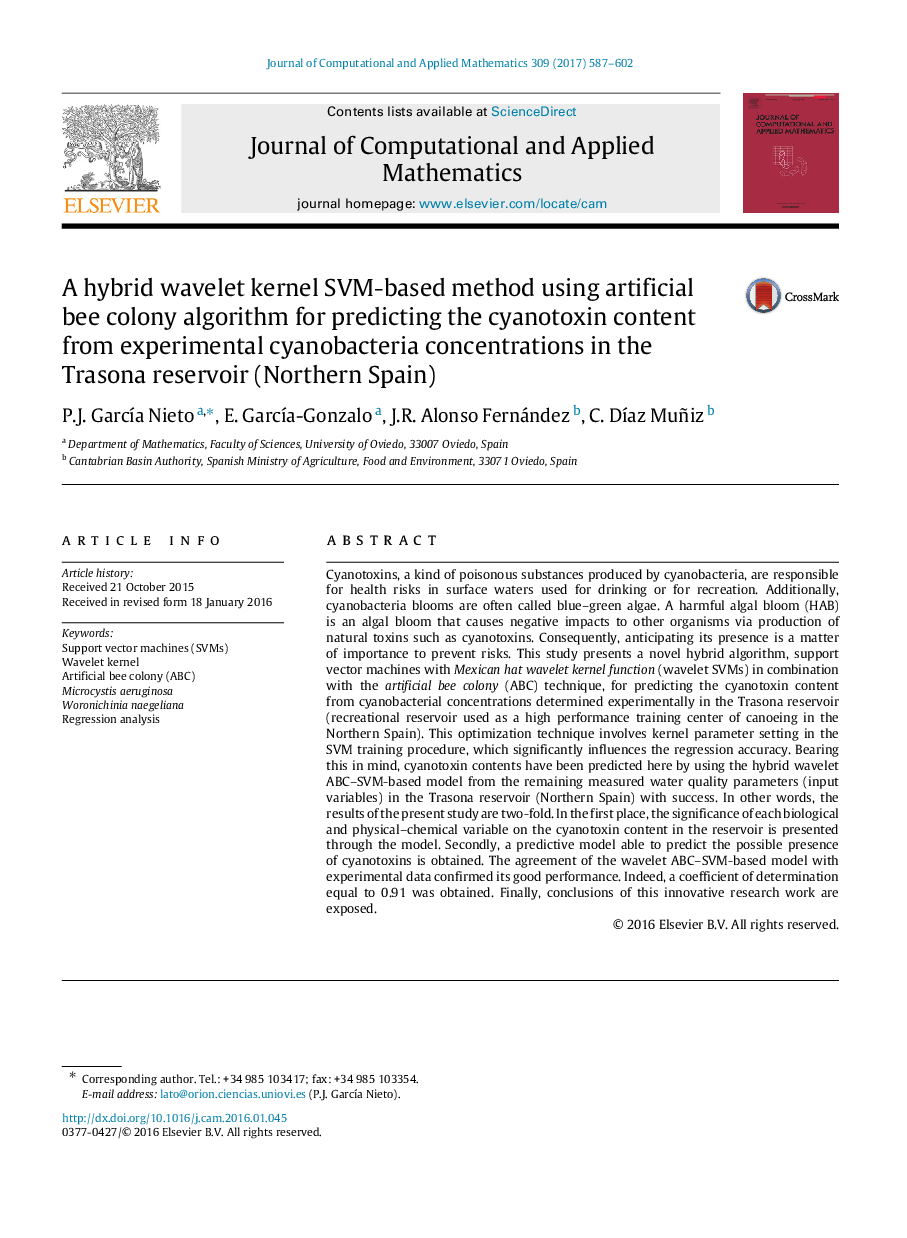| کد مقاله | کد نشریه | سال انتشار | مقاله انگلیسی | نسخه تمام متن |
|---|---|---|---|---|
| 4637835 | 1631982 | 2017 | 16 صفحه PDF | دانلود رایگان |
Cyanotoxins, a kind of poisonous substances produced by cyanobacteria, are responsible for health risks in surface waters used for drinking or for recreation. Additionally, cyanobacteria blooms are often called blue–green algae. A harmful algal bloom (HAB) is an algal bloom that causes negative impacts to other organisms via production of natural toxins such as cyanotoxins. Consequently, anticipating its presence is a matter of importance to prevent risks. This study presents a novel hybrid algorithm, support vector machines with Mexican hat wavelet kernel function (wavelet SVMs) in combination with the artificial bee colony (ABC) technique, for predicting the cyanotoxin content from cyanobacterial concentrations determined experimentally in the Trasona reservoir (recreational reservoir used as a high performance training center of canoeing in the Northern Spain). This optimization technique involves kernel parameter setting in the SVM training procedure, which significantly influences the regression accuracy. Bearing this in mind, cyanotoxin contents have been predicted here by using the hybrid wavelet ABC–SVM-based model from the remaining measured water quality parameters (input variables) in the Trasona reservoir (Northern Spain) with success. In other words, the results of the present study are two-fold. In the first place, the significance of each biological and physical–chemical variable on the cyanotoxin content in the reservoir is presented through the model. Secondly, a predictive model able to predict the possible presence of cyanotoxins is obtained. The agreement of the wavelet ABC–SVM-based model with experimental data confirmed its good performance. Indeed, a coefficient of determination equal to 0.91 was obtained. Finally, conclusions of this innovative research work are exposed.
Journal: Journal of Computational and Applied Mathematics - Volume 309, 1 January 2017, Pages 587–602
